Once again, Burnley are fighting a relegation battle in the Premier League. Burnley sacked the semi-mythical figure of Sean Dyche after Burnley’s loss to Norwich, which caused quite a stir. Dyche left, Mike Jackson took the helm and immediately injected Burnley with energy. After four games, Burnley have won three and drawn one under Jackson. Since taking over, Burnely’s tactics have deviated slightly from the era of Dyche, and The Clarets seem to be thriving under Jackson.
This tactical analysis will feature how Mike Jackson has changed the tactics at Burnley.
The data
This section compares the data from Jackson’s first four games in charge and the reverse fixture that Dyche managed. The four teams they faced were West Ham, Southampton, Wolves and Watford, and all statistics will be on a per-game basis.
Expected goals (xG) have shot up with Jackson. Under Jackson, Burnley has produced 1.9 xG, more than double what Dyche’s team created (0.8). Also, shots have increased to 11.8 under Jackson from 9.5 under Dyche. Shots on target have more than doubled from 2 to 4.3.
In possession, Burnley passes the ball 7% more often, and the accuracy has increased from 73.4% to 79%. The number of long balls has reduced from 59.8 to 45.3, and the accuracy has gone up by 9%. Also, Burnely have averaged 43.3% possession under Jackson, which is more than Dyche’s 41%.
Burnley have opened themselves up a lot more, as shown by their xG against increasing from 1 to 1.7. Their shots against almost identical, and the difference in shots on target are insignificant.
Despite the eye test telling otherwise, Jackson has reduced the PPDA from 9.7 to 11.2.
You can take the Dyche out of Burnley…
Dyche did not have a fleeting impact on Burnley. Before his sacking, he was the longest-serving manager in the Premier League after spending nine seasons at Turf Moor. He has brought in and developed all the players currently playing under Jackson, and it shows.
Burnley are known as a team that scores from set-pieces and crosses, both of which are still applicable to Burnley under Jackson. Burnley have scored three out of their six goals, under Jackson, from corners and crosses. One of these goals came against West Ham, which seems like the class Dyche goal. Burnley win two headers in West Ham’s 6-yard-box and scored from it. The goal against Southampton was also from a corner where Nathan Collins out-leaps any defender. Finally, the last goal here was the first goal against Watford. We can see ex-Chelsea midfielder Jack Cork running towards the back post, and he uses his determination to get any body part to the cross, which led to a possible season-defining goal.
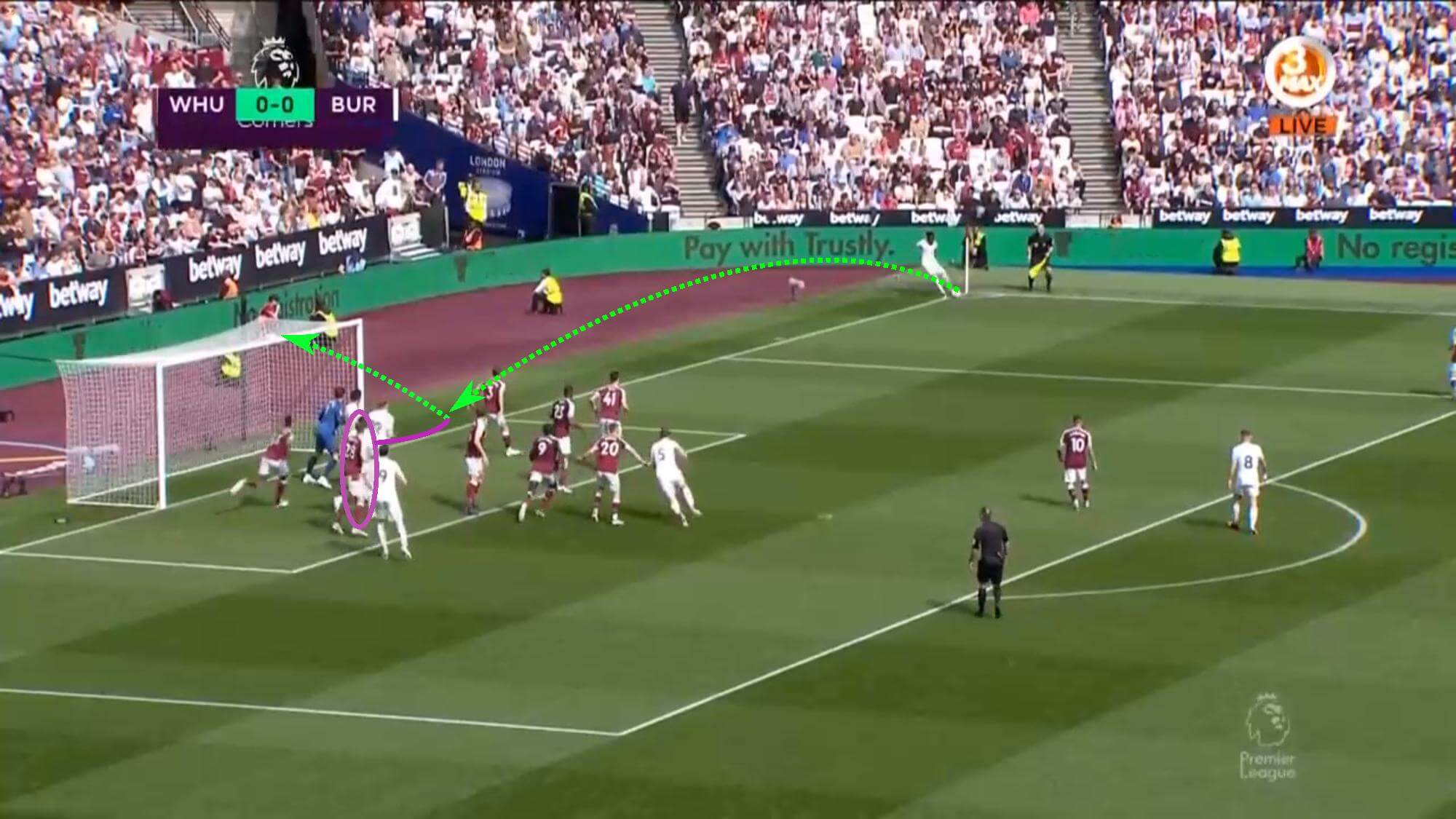
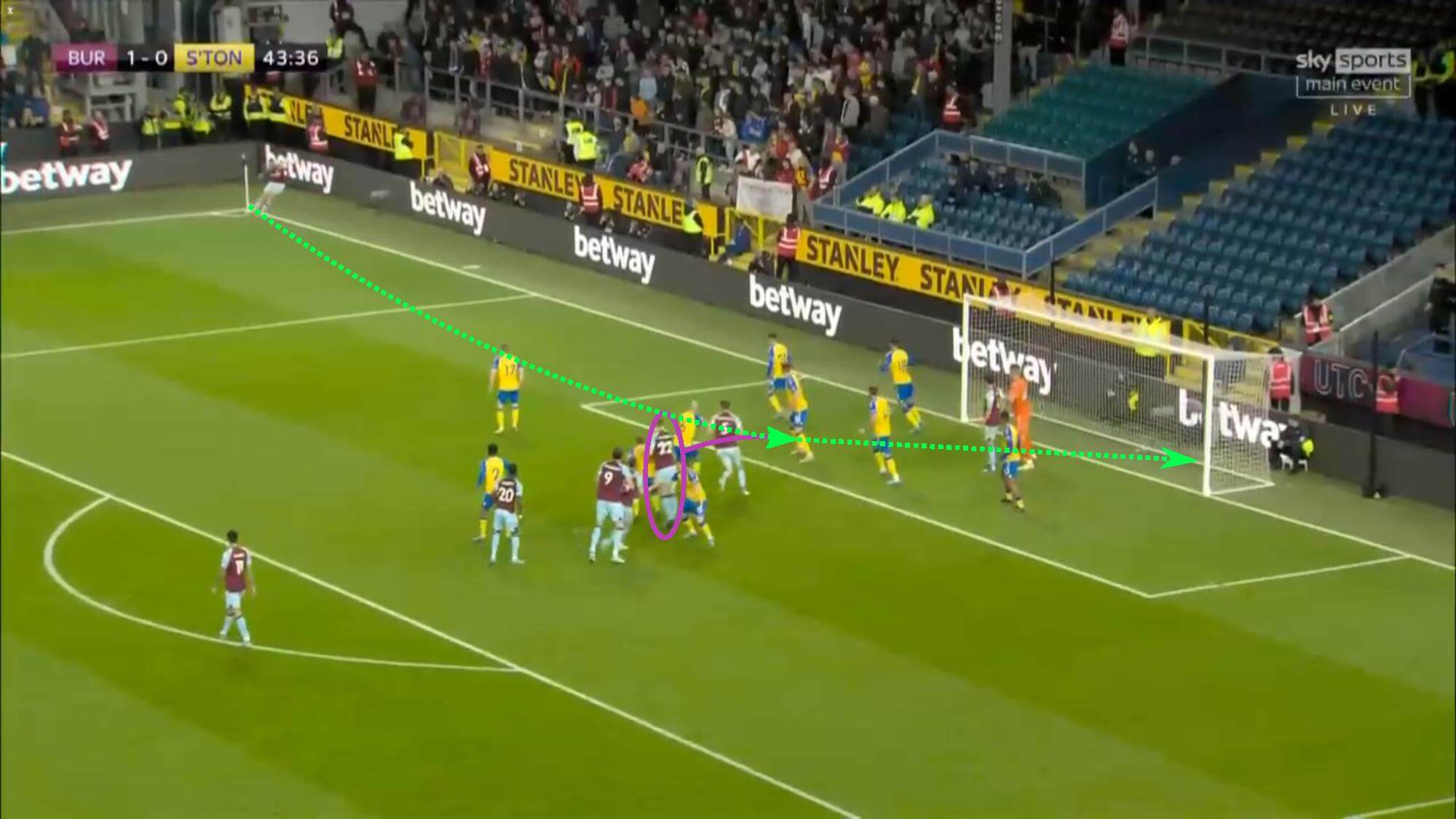
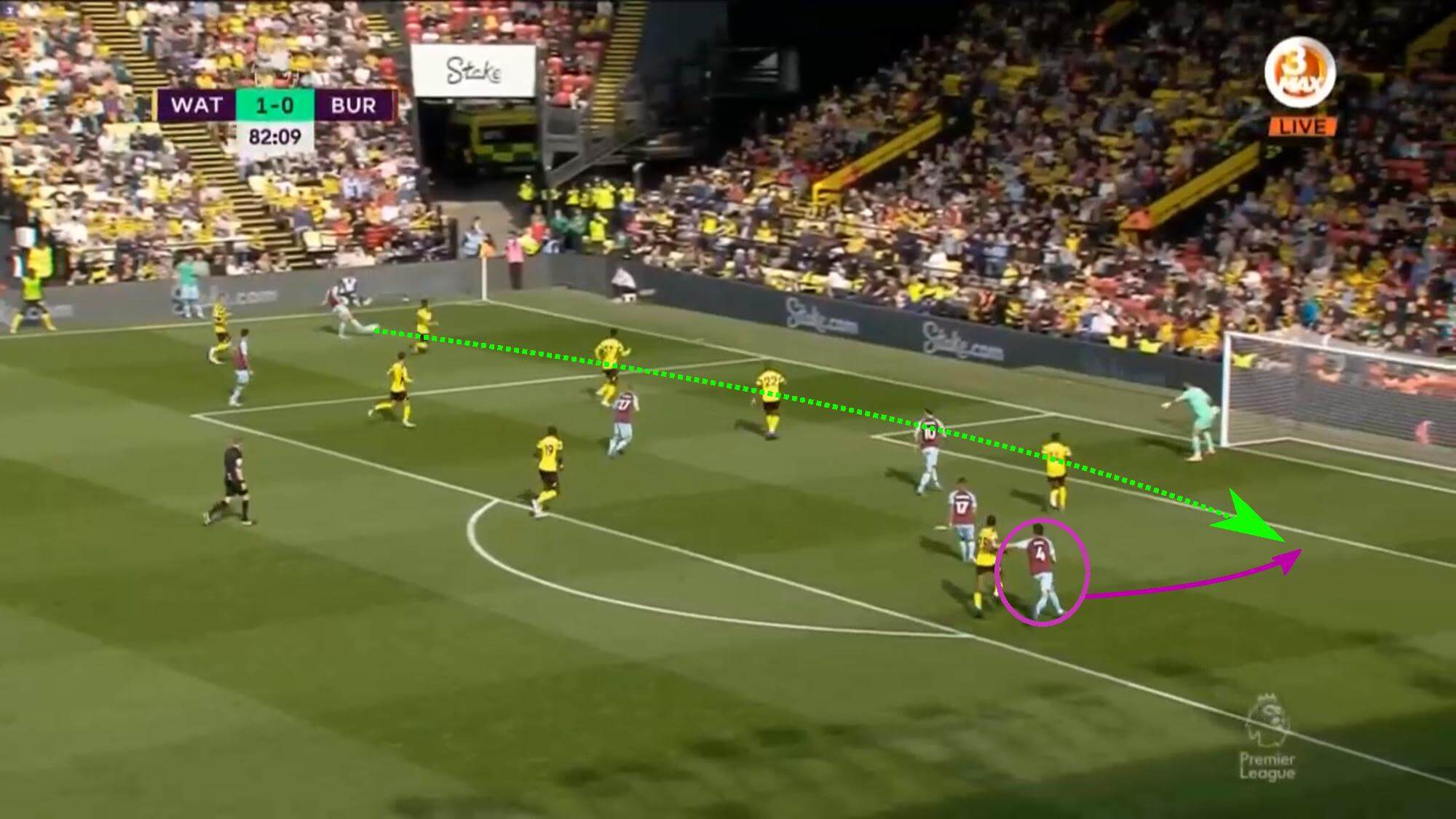
Something that has stayed similar is the goalkeeper’s distribution. These examples against Watford show how Jackson has tried to keep his tactics similar to Dyche’s. Nick Pope, a goalkeeper, not known for his composure on the ball, has been told to keep launching the ball forward if he is pressed on the ball. Pope could be facing a one-man press, and he will still kick it long despite having multiple options available to him.
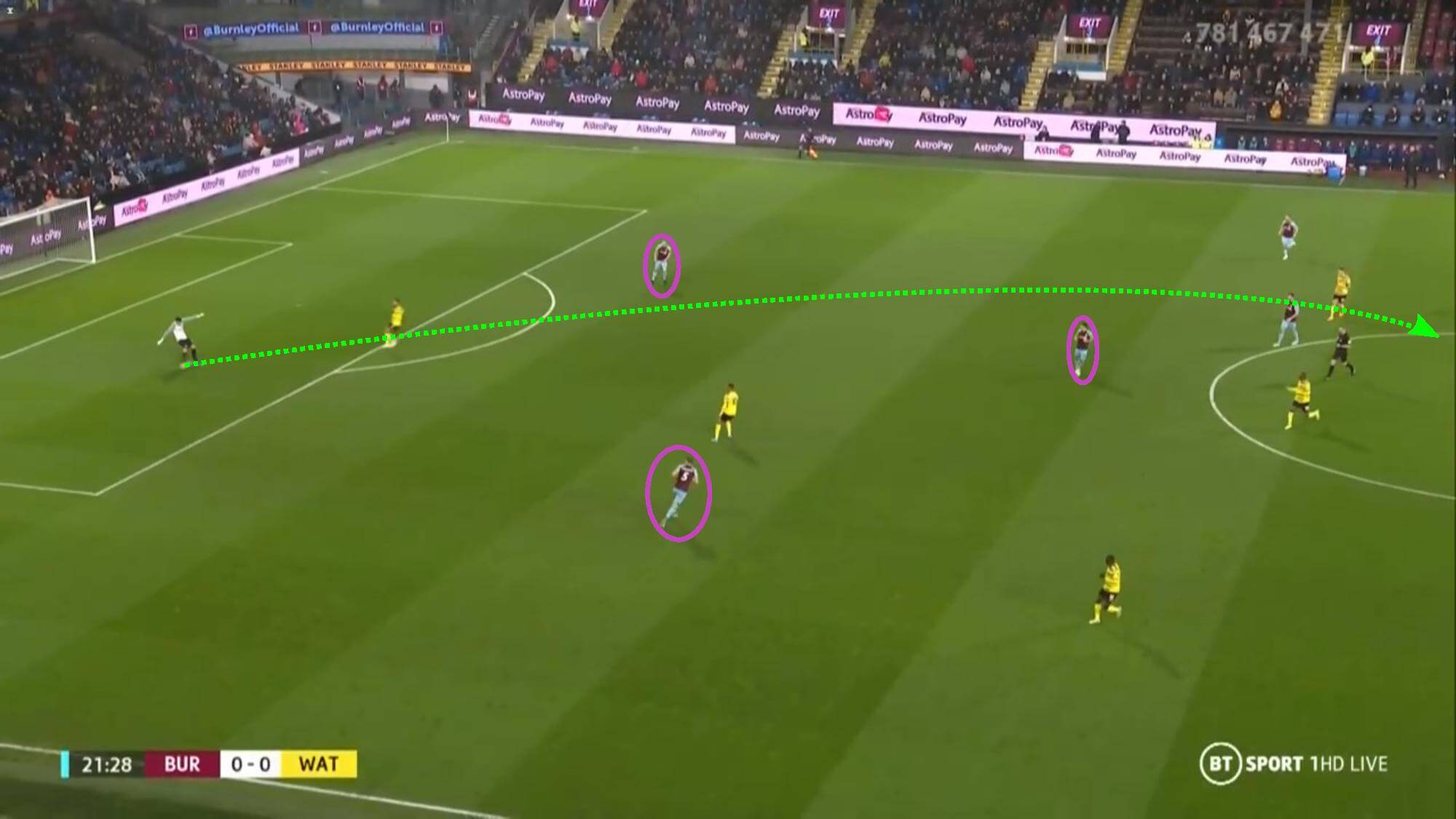
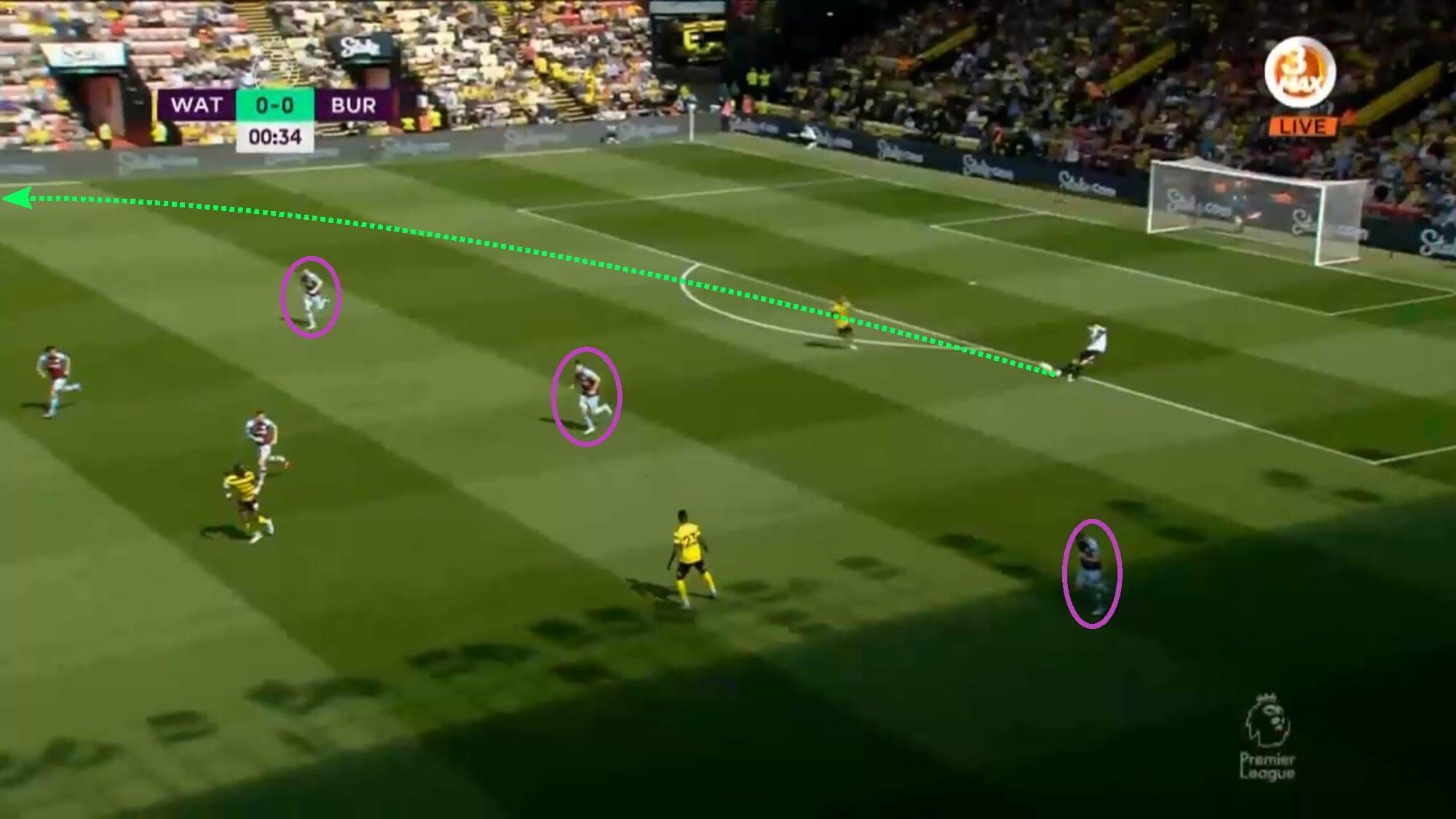
Finally, the formation has not been touched. Burnley still play their usual 4-4-2 formation, and Jackson does not overthink the lineup, typically keeping players to their preferred positions. Plus, Jackson is ready to add on defenders, such as when fullback Matthew Lowton replaced winger Aaron Lennon when ahead in matches which was a common theme under Dyche. Burnley are still their usual gritty self but with a few differences.
Defensive differences
Unfairly, Dyche was tarnished as a manager who traditionally sits deep and soaks up the pressure. But, if we examine how his Burnley side played, we can see Dyche liked to press high up the pitch.
We are not saying Dyche’s Burnley was similar to Jurgen Klopp’s Liverpool, but Burnley pressed high when the opportunity arose. For example, against West Ham, Burnley’s nearest fullback to the ball, if The Hammers had the ball on the wing, would push up and challenge the oncoming attacker. This would create significant gaps behind Burnely’s fullbacks which West Ham should have exploited, but it wasn’t. Plus, both the Burnley strikers were ready to
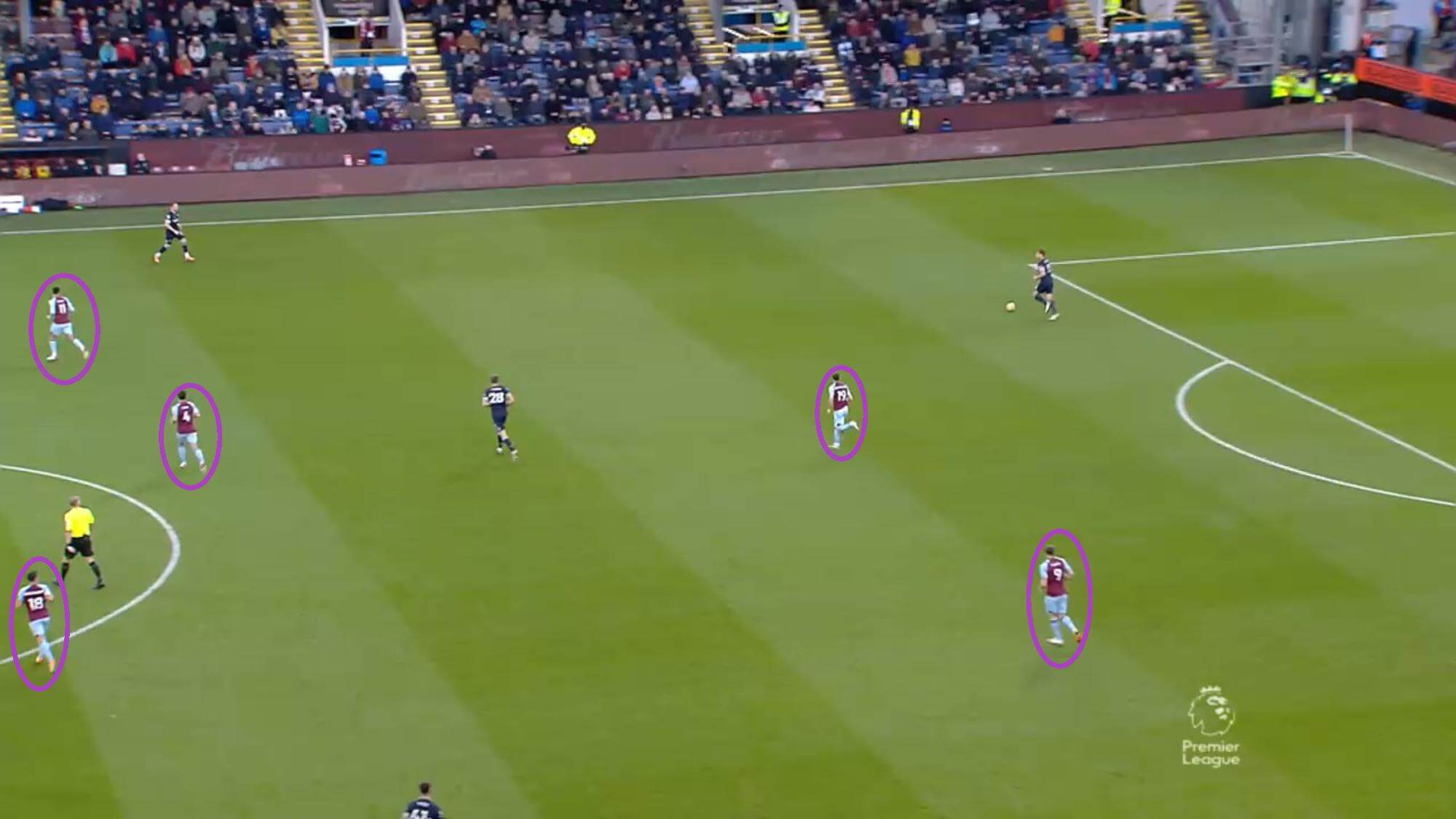
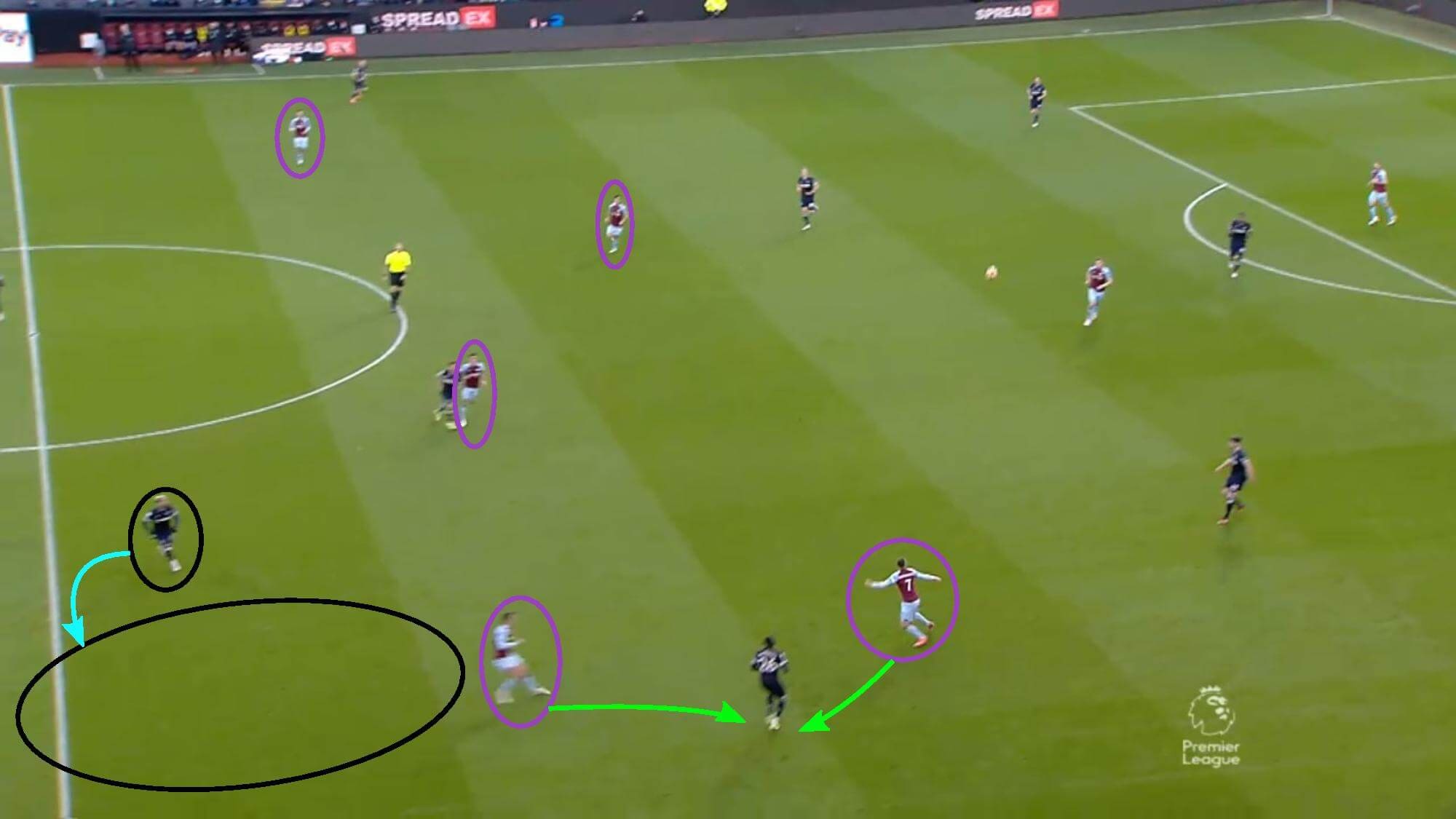
In comparison, Jackson is ready to defend deeper than Dyche. Despite the data telling us that Jackson’s Burnley have been more open than before, defending deeper seems to work for The Clarets. This is because of the profile of Burnley’s defenders. Ben Mee and James Tarkowski are comfortable defending long balls due to their large frames. Matthew Lowton is also tall for a fullback, and Charlie Taylor has great determination to help win the second ball.
Looking at the Watford game, where Burnley won, Jackson set up his side to not counter-press hard. We know this because Wout Weghorst and Matej Vydra retreat backwards and do not attempt to knick the ball away. Charlie Taylor was tempted to follow the old protocol for fullbacks, but he decided to fall back instead.
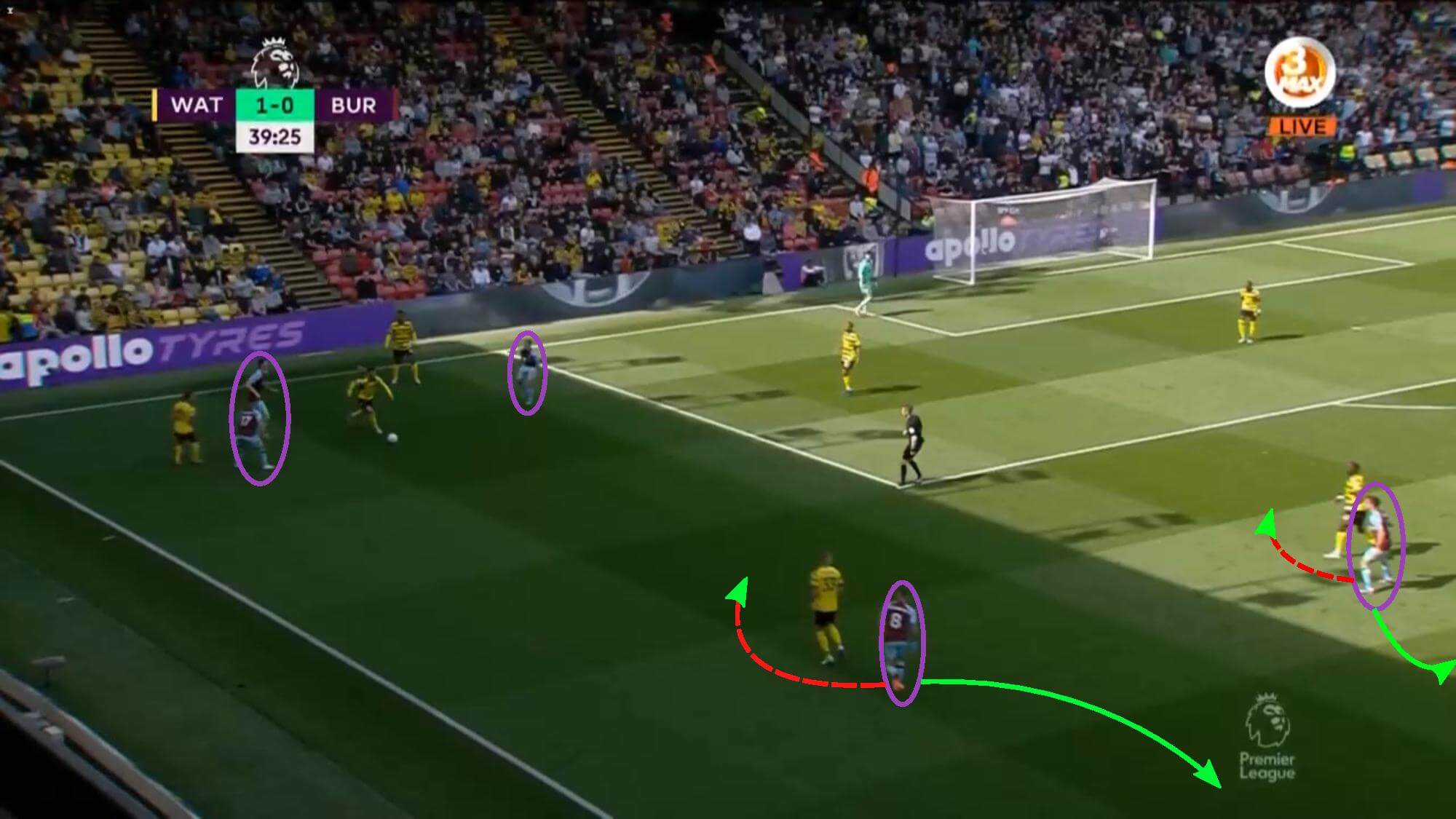
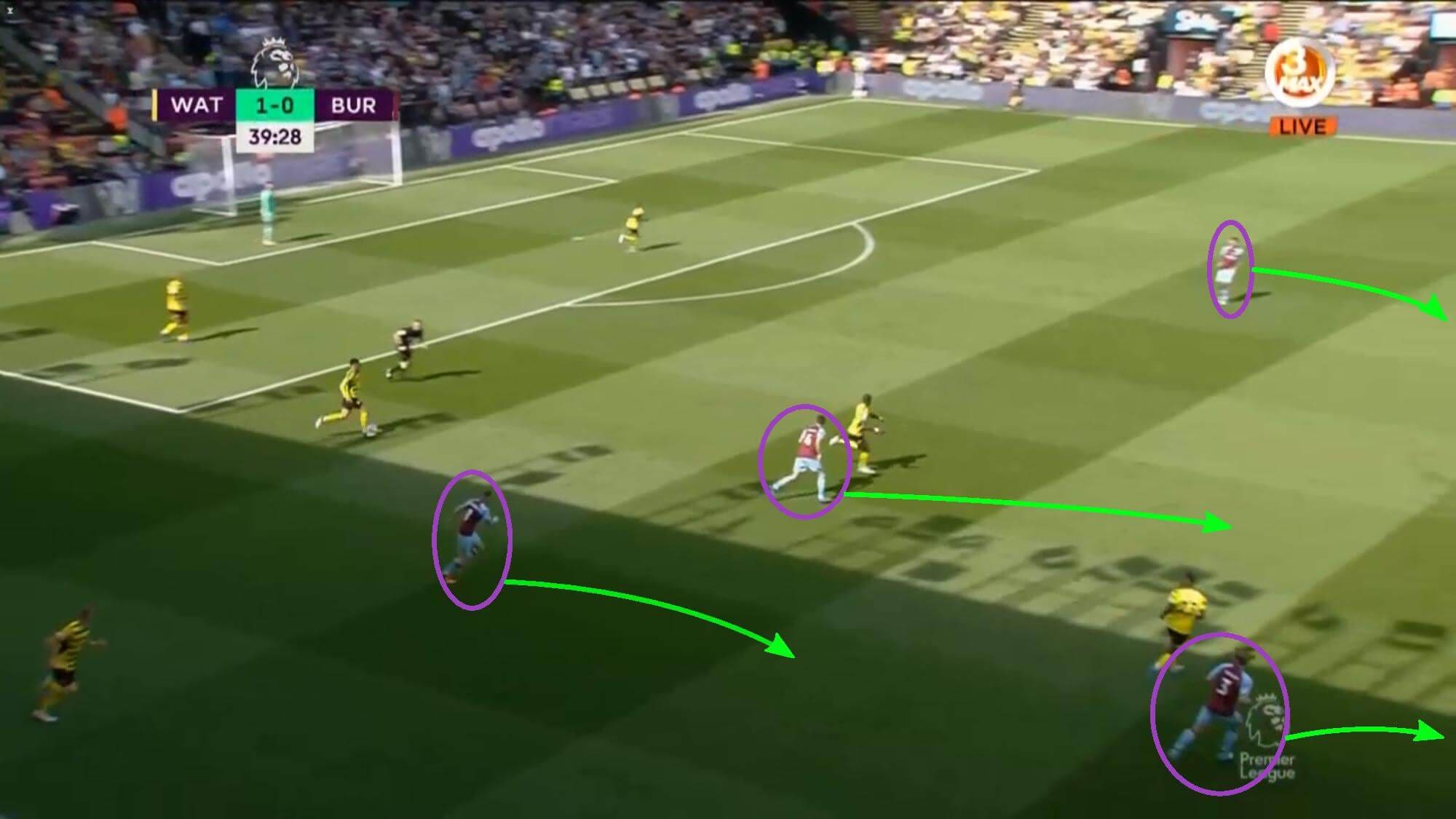
Looking at a more relaxed scenario in the same game, we can see how deep Weghorst and Vydra are when Burnley can set themselves up. The bank of four behind the strikers stays close to the strikers, which makes it harder for Watford to pass through Burnley. The less intense pressing also allows Burnley to exert more energy on intricate passing going forward.
Shorter passing
Against Wolves, Burnley played some of their most eye-catching attacks this season. But it wasn’t that Burnley played 100 passes per scoring. Instead, it was the movement from the front two and the quick transition to attack. In this first frame, we can see Dwight McNeil going on a fantastic dribble and some intriguing movement from Weghorst. The Dutch striker started from the far side and came close to get the ball. Weghorst’s movement across the Wolves defenders made him wildly unpredictable. This is because, in Weghorst’s original position, the defenders would be getting ready for a cross to come into him at the back post, which is somewhat standard for Burnley. Then, Weghorst’s change of trajectory gives the Burnley player an easy option to pass too. Weghorst then squares the ball to Vydra, and the Czech striker finds the back of the net.
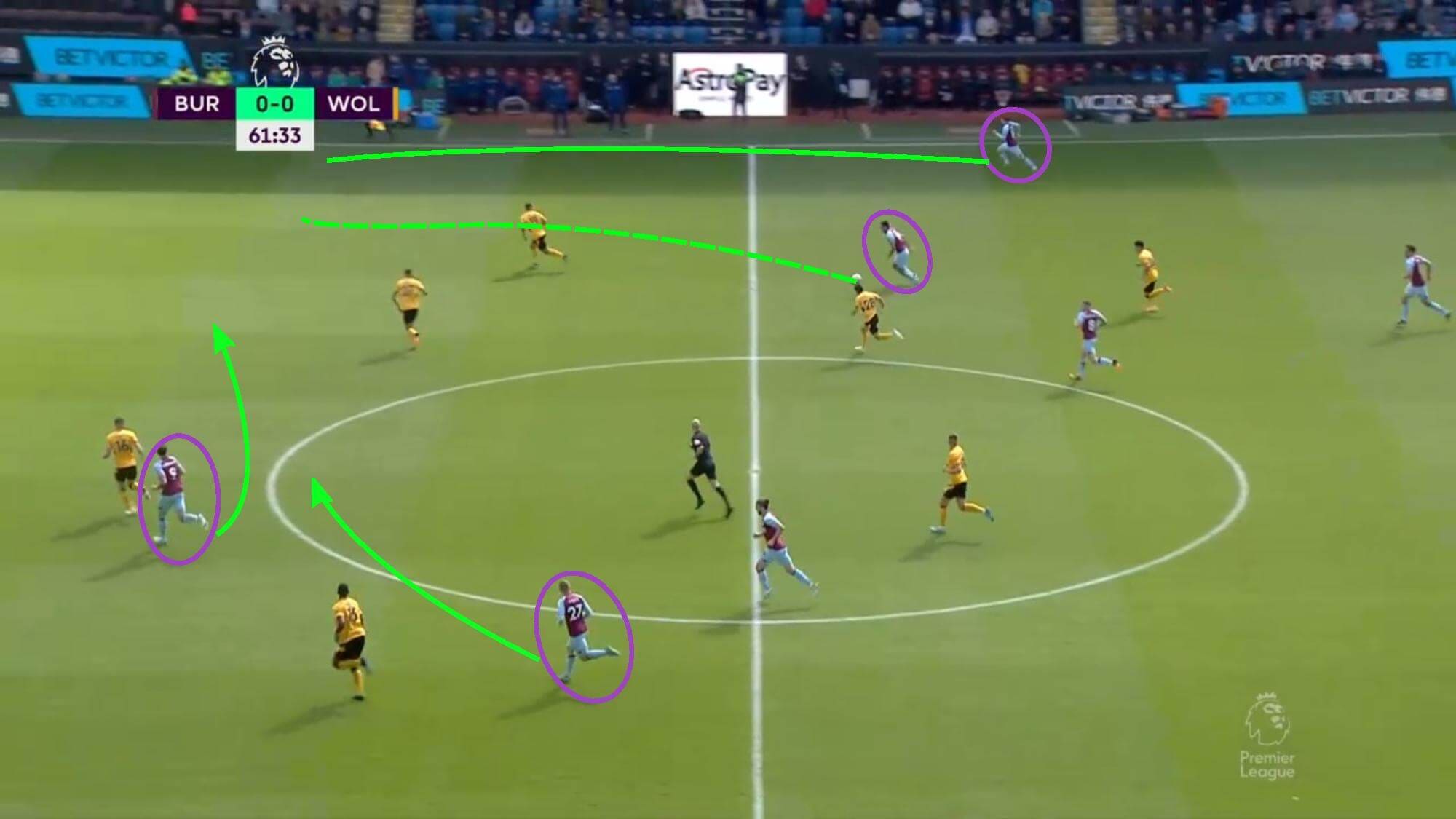
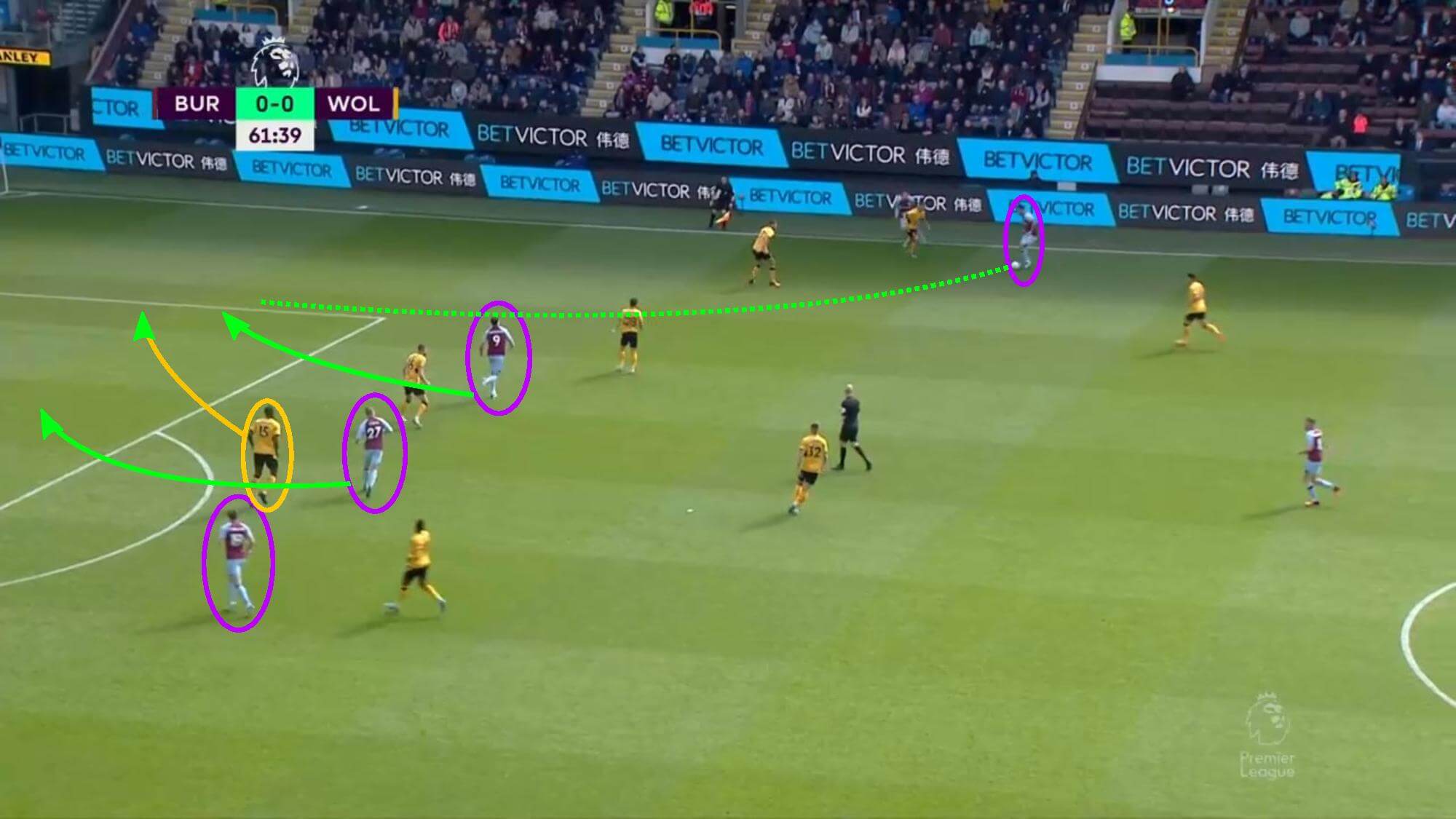
Under Dyche’s tutelage, you would need to scour quite vicariously to find such a good goal as this one. Of course, you have some thunderous strikers like Jeff Hendrick’s against Bournemouth in 2017, but very few come in the fashion of this goal. The short passing and intelligent runs have helped their potency in front of goal, and it shows.
Conclusion
Overall, Jackson has made some minor changes to Burnley. They still play the long ball forward towards the strikers, have the same determination and grit as before, and love a headed goal. But, they have introduced some more modern tactics. You can watch a Burnley match and be in awe of the array of passing and movement off the ball. Also, Burnley defend deeper and look more solid, despite the stats saying otherwise.
Many people thought Sean Dyche leaving would be the end of Burnley, but it seems as if Mike Jackson has re-energised this side. Burnley seem to be playing their way into safety this season.





Comments